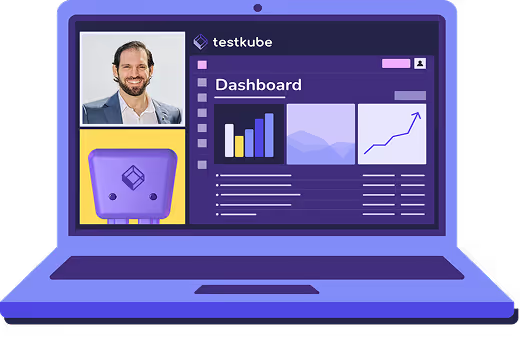Table of Contents
What Does Software Testing Applications Mean?
Software testing applications are purpose-built tools that automate and optimize different phases of the software testing lifecycle, from test case creation and execution to defect tracking and reporting. These applications streamline validation, accelerate feedback loops, and integrate tightly with development pipelines to ensure software quality across web, mobile, API, and desktop platforms.
Why It Matters
As modern software systems grow more complex, manual testing alone cannot keep up with release velocity or quality expectations. Software testing applications enable development and QA teams to:
- Automate repetitive test cases for faster releases.
- Detect issues earlier through continuous integration.
- Improve accuracy and reproducibility in results.
- Scale testing coverage across environments and devices.
Using the right mix of testing applications ensures reliable, secure, and high-performing software delivery.
How It Works
Software testing applications perform validation tasks automatically or semi-automatically during development and deployment.
They can simulate user interactions, run performance benchmarks, or scan source code for defects. When integrated into a CI/CD pipeline or orchestrated through Kubernetes, these tools execute continuously across environments, improving visibility and reducing bottlenecks between development, QA, and operations.
Common Categories of Software Testing Applications
1. Test Management Tools
Plan, organize, and track testing activities, including requirements, cases, and results.
Examples: Jira, TestLodge, BrowserStack Test Management, aqua cloud.
2. Test Automation Tools
Automate test execution for regression, integration, and end-to-end testing.
Examples:
- Web Testing: Selenium, Playwright, Cypress, Katalon Studio.
- Mobile Testing: Appium, Katalon Studio, TestGrid.
- API Testing: Postman, SoapUI.
- Desktop Testing: TestComplete, Ranorex.
3. Performance Testing Tools
Simulate user load to evaluate scalability and response under stress.
Examples: Apache JMeter, LoadRunner, NeoLoad.
4. Security Testing Tools
Identify vulnerabilities and weaknesses in software or APIs.
Examples: OWASP ZAP, Burp Suite, Nessus.
5. Static Analysis Tools
Analyze code without execution to catch issues early in development.
Examples: SonarQube, Checkmarx, Fortify.
6. Mobile Testing Tools
Test mobile apps across multiple devices, operating systems, and environments.
Examples: Appium, TestMoro, TestRig Mobile.
7. AI-Powered Testing Tools
Leverage artificial intelligence to automate test creation, defect prediction, and maintenance.
Examples: ACCELQ, mabl, Testcraft.
Key Benefits
- Reduces manual testing effort and human error.
- Accelerates CI/CD feedback loops through automation.
- Improves test coverage across technologies and environments.
- Detects defects earlier in the development lifecycle.
- Enables data-driven insights through reports and analytics.
How It Relates to Testkube
While software testing applications focus on specific areas of quality assurance, they often operate in silos—requiring multiple integrations and environments to function together.
Testkube provides the orchestration layer that unifies them across Kubernetes-based workflows.
- Unified Orchestration: Testkube runs any testing application or framework inside Kubernetes, eliminating the need for custom integrations or scattered CI jobs.
- Scalable Execution: Teams can execute tests in parallel across clusters, scaling workloads based on available resources.
- Environment Parity: Testkube ensures the same configuration and dependencies exist across local, staging, and production environments.
- Centralized Observability: Logs, metrics, and results from multiple tools are aggregated into one control plane for consistent reporting and troubleshooting.
- AI-Ready Automation: Testkube’s MCP Server allows AI agents to define, trigger, and analyze tests autonomously—supporting continuous testing for AI-generated code.
By connecting and orchestrating existing software testing applications, Testkube transforms fragmented testing ecosystems into a unified, cloud-native continuous testing platform.
Best Practices
- Choose tools that align with your technology stack and release cadence.
- Containerize your testing applications for portability and consistency.
- Integrate testing tools with CI/CD pipelines and observability systems.
- Automate execution and reporting to ensure continuous validation.
- Use orchestration platforms like Testkube for multi-framework scalability.
Common Pitfalls
- Managing testing tools in isolation leads to duplicated configuration and maintenance effort.
- Running tests directly in CI/CD without orchestration slows pipelines.
- Lack of test result aggregation reduces visibility into quality trends.
- Missing environment parity introduces flakiness and inconsistent results.
- Underutilizing automation capabilities leads to slower delivery cycles.
Frequently Asked Questions (FAQs)
What are software testing applications used for?
They automate and manage the testing process, covering planning, execution, reporting, and defect management across various environments.
Are software testing applications the same as automation tools?
Automation tools are a subset of software testing applications focused on execution, while others handle management, reporting, or static analysis.
Can Testkube run third-party testing applications?
Yes. Testkube integrates seamlessly with most open-source and enterprise-grade testing frameworks that can be containerized.
What makes Testkube different from traditional testing tools?
Testkube orchestrates tests rather than replacing tools. It provides centralized control, scalable execution, and unified observability inside Kubernetes.
Do I need Kubernetes to use Testkube?
You can start locally with Minikube, Kind, or Testkube Cloud, and expand to full Kubernetes environments as needed.


